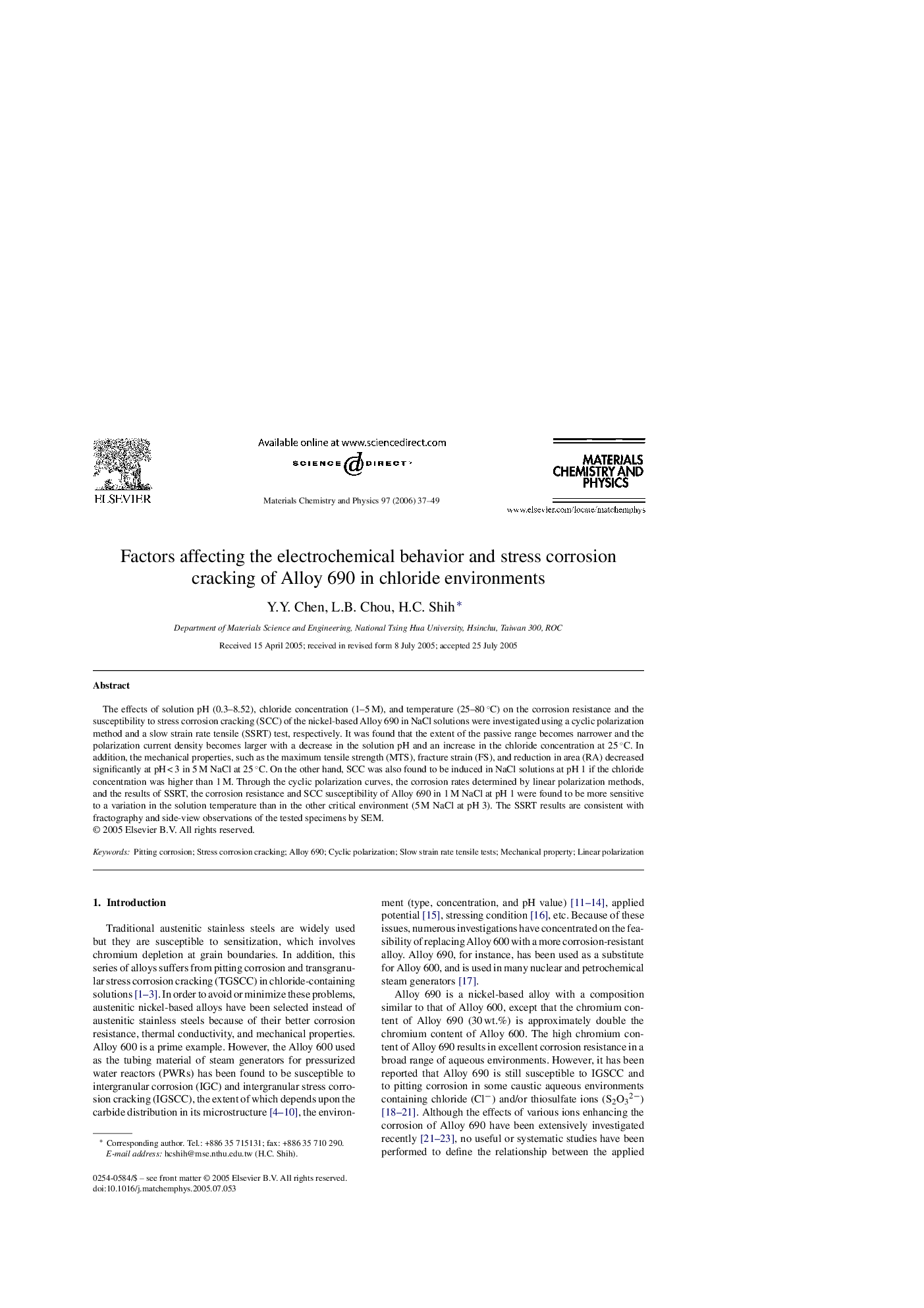| Article ID | Journal | Published Year | Pages | File Type |
|---|---|---|---|---|
| 1527800 | Materials Chemistry and Physics | 2006 | 13 Pages |
Abstract
The effects of solution pH (0.3-8.52), chloride concentration (1-5 M), and temperature (25-80 °C) on the corrosion resistance and the susceptibility to stress corrosion cracking (SCC) of the nickel-based Alloy 690 in NaCl solutions were investigated using a cyclic polarization method and a slow strain rate tensile (SSRT) test, respectively. It was found that the extent of the passive range becomes narrower and the polarization current density becomes larger with a decrease in the solution pH and an increase in the chloride concentration at 25 °C. In addition, the mechanical properties, such as the maximum tensile strength (MTS), fracture strain (FS), and reduction in area (RA) decreased significantly at pH < 3 in 5 M NaCl at 25 °C. On the other hand, SCC was also found to be induced in NaCl solutions at pH 1 if the chloride concentration was higher than 1 M. Through the cyclic polarization curves, the corrosion rates determined by linear polarization methods, and the results of SSRT, the corrosion resistance and SCC susceptibility of Alloy 690 in 1 M NaCl at pH 1 were found to be more sensitive to a variation in the solution temperature than in the other critical environment (5 M NaCl at pH 3). The SSRT results are consistent with fractography and side-view observations of the tested specimens by SEM.
Keywords
Related Topics
Physical Sciences and Engineering
Materials Science
Electronic, Optical and Magnetic Materials
Authors
Y.Y. Chen, L.B. Chou, H.C. Shih,
